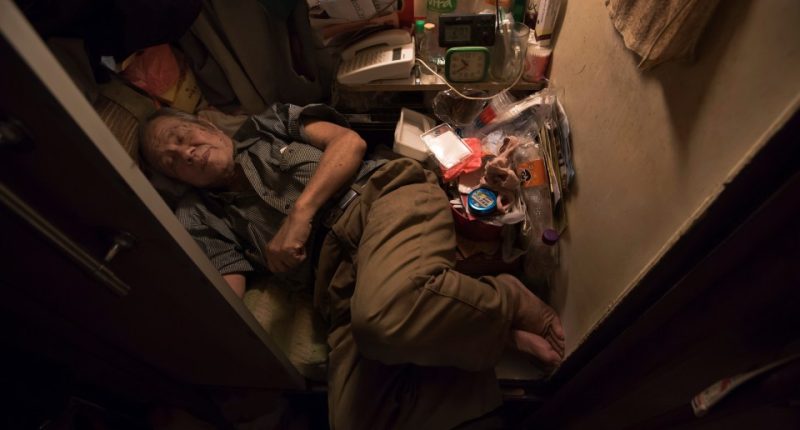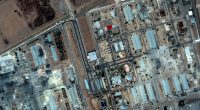Share this @internewscast.com
HONG Kong residents crammed into so-called coffin homes sleep on tiny beds which fill entire rooms without enough space for luggage.
Over 200,000 residents in Hong Kong, China, have no choice but to live in overcrowded, poor conditions within minuscule, box-like spaces that offer just a few feet of personal space.
The former British colony has topped the list for the world’s most unaffordable city for the 14th year running.
And it also suffers one of the worst inequality rates on the planet.
Its subdivided flats, barely big enough to squeeze in a double bed, have become notorious for eye-watering rents.
Last week, YouTuber Drew Binsky, 34, shared shocking footage from inside one of the cramped properties.
After witnessing the horrifying conditions, he dubbed it the “sad reality of life in HK”.
He revealed that tenants are coughing up around £217 a month for a space in a flat packed with 26 box-sized “coffin homes”.
Remarkable footage revealed a man reclining in his improvised cubicle, his possessions crammed against the walls and overflowing onto his slender bed.
A tiny TV sits at the foot of one resident’s bed, almost completely buried under a tangled mess of wires and plugs.
The exterior appears nearly entirely derelict, with many of the so-called homes wedged into crumbling tower blocks in run-down business districts.
Over the years, many photographers have captured the shocking scenes within the minuscule pads.
Each pod measures just 15 to 18 square feet, barely enough room to lie down and stash belongings.
The airless, windowless cells leave tenants with a severe lack of ventilation during seasons of sweltering heat.
Many try to alleviate this problem by keeping their flimsy sliding doors open, sacrificing any shred of privacy.
Residents also have to share filthy, bug-infested toilets with dozens of neighbours.
The stench of damp and decay is also potent when living inside the cramped cells.
These confined living spaces starkly contrast with the opulence of the affluent in Hong Kong, including the middle class, who reside in hilltop villas or conventional apartments.
“Coffin homes” have long attracted the international media spotlight as a symbol of the city’s failed housing policies.
But Hong Kong officials have pledged to phase out the infamous “coffin homes” by 2049.
They have set new rules on minimum living space and safety standards for subdivided flats.
Local authorities said they have identified enough land to build 308,000 public housing units over the next decade.
Since July 2022, around 49,000 people have been moved into public rental housing, with another 18,400 units of temporary accommodation made available as a short-term fix.
Hong Kong was also known for its sprawling fortress which was once the most crowded city on Earth.
With some 50,000 people crammed into a few blocks of concrete jungle, Kowloon Walled City was an ungoverned place plagued by lawlessness.
The city was a wonder in itself – with thousands of families and businesses housed in some 300 interconnected high-rise buildings across 6.4 acres of land.
Haunting pictures showed the grim reality of the concrete jungle, which existed as a Chinese territory, with narrow tower blocks packed tight against each other.
The astonishing scenes echo living standards in Manila, where slums are among the most tightly packed in the world.
Extraordinary aerial images shed light on just how crowded the shanty towns really are in the Philippines capital.
























